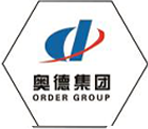
Nov . 25, 2024 00:55
Back to list
Understanding the Functionality and Applications of Cyclone Separators in Industrial Processes
Cyclone Separator An Efficient Air Pollution Control Device
In today’s industrial landscape, the need for efficient air pollution control is more pressing than ever. One device that has gained considerable attention for its effectiveness in separating particulate matter from gases is the cyclone separator. This device operates on the principle of centrifugal force, making it a vital component in various industries including manufacturing, power generation, and chemical processing.
What is a Cyclone Separator?
A cyclone separator is a mechanical device that uses centrifugal force to remove particulate matter from gas streams. The design generally consists of a cylindrical chamber that is wider at the top and narrows down towards the bottom. When contaminated air enters the cyclone separator, it is forced to spin rapidly in the circular chamber. This spinning motion generates a centrifugal force that pushes heavier particles to the outer wall of the chamber, while lighter gases move toward the center and flow upward, eventually exiting through the top.
The particles collected against the wall then fall into a hopper at the bottom, where they can be collected or disposed of. The clean air is then discharged, making the cyclone separator an effective tool for reducing emissions.
Working Principle
The operation of a cyclone separator can be understood through its three main steps separation, settling, and discharge. Initially, the contaminated gas enters the cyclone separator tangentially. This tangential entry is crucial as it gives the air a rotational Speed, creating a vortex.
As the gas spins, the denser particles experience a stronger centrifugal force and are thrown outward against the walls of the cyclone. These particles then move downward due to gravity, where they settle in a collection chamber. The lighter gases, meanwhile, remain in the center of the cyclone and are drawn upward, exiting through the top of the separator.
The efficiency of particle removal in a cyclone separator is influenced by several factors such as the design of the cyclone, the flow rate of the gas, and the size and density of the particles. Typically, cyclone separators can achieve efficiencies of around 85% to 95% for particles larger than 5 microns, making them ideal for various applications.
cyclone separator

Applications
Cyclone separators are widely used in numerous industrial applications. In the food industry, for example, they are utilized to remove flour and starch dust from air to maintain clean environments. In construction, they help capture dust and debris from concrete mixing processes. Additionally, they are employed in the wood and paper industries to control dust emissions, ensuring compliance with environmental regulations.
In the energy sector, cyclone separators are often used in coal-fired power plants to reduce fly ash emissions. Similarly, they find application in industrial boiler systems to capture soot and other particulates before they can escape into the atmosphere.
Advantages of Cyclone Separators
One of the main advantages of cyclone separators is their simplicity of design, which results in low maintenance requirements. They do not have any moving parts, reducing the risk of wear and tear commonly associated with other filtration systems. Additionally, cyclone separators can operate effectively under high temperatures and pressures, making them suitable for demanding environments.
Moreover, cyclone separators are versatile and can be used in conjunction with other pollution control devices such as bag filters or scrubbers, enhancing the overall efficiency of air pollution control systems.
Conclusion
The cyclone separator stands out as an efficient and economical solution for particulate matter removal across various industries. Its effectiveness, coupled with low operational costs and minimal maintenance requirements, makes it an indispensable device in the quest for cleaner air. As industries continue to strive for more sustainable practices, the cyclone separator’s role will undoubtedly grow, further contributing to improved air quality and environmental protection.
Latest news
-
Safety Valve Spring-Loaded Design Overpressure ProtectionNewsJul.25,2025
-
Precision Voltage Regulator AC5 Accuracy Grade PerformanceNewsJul.25,2025
-
Natural Gas Pressure Regulating Skid Industrial Pipeline ApplicationsNewsJul.25,2025
-
Natural Gas Filter Stainless Steel Mesh Element DesignNewsJul.25,2025
-
Gas Pressure Regulator Valve Direct-Acting Spring-Loaded DesignNewsJul.25,2025
-
Decompression Equipment Multi-Stage Heat Exchange System DesignNewsJul.25,2025

